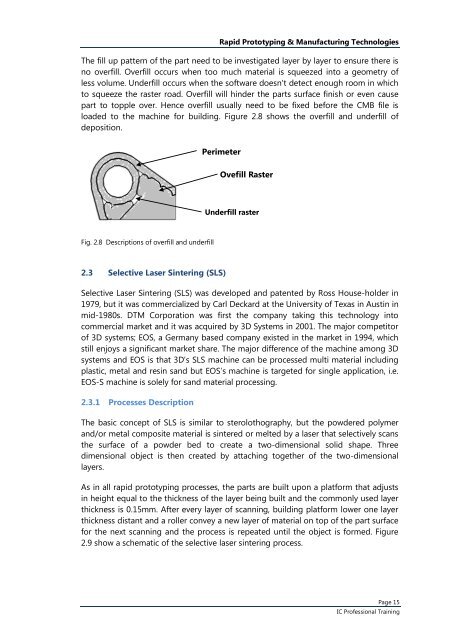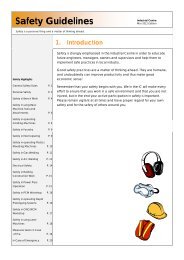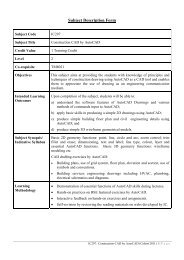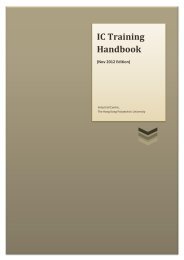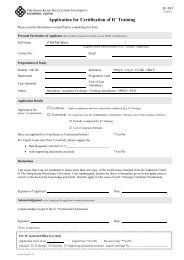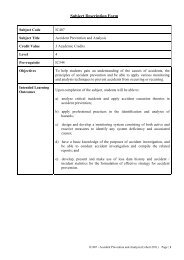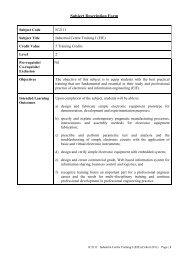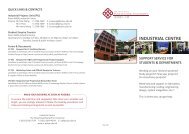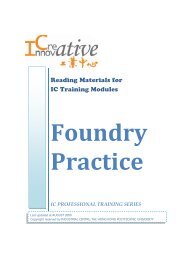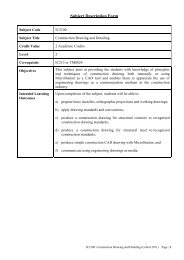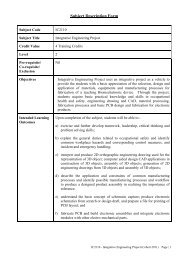Rapid Prototyping & Manufacturing Technologies - to submit your ...
Rapid Prototyping & Manufacturing Technologies - to submit your ...
Rapid Prototyping & Manufacturing Technologies - to submit your ...
Create successful ePaper yourself
Turn your PDF publications into a flip-book with our unique Google optimized e-Paper software.
<strong>Rapid</strong> <strong>Pro<strong>to</strong>typing</strong> & <strong>Manufacturing</strong> <strong>Technologies</strong>The fill up pattern of the part need <strong>to</strong> be investigated layer by layer <strong>to</strong> ensure there isno overfill. Overfill occurs when <strong>to</strong>o much material is squeezed in<strong>to</strong> a geometry ofless volume. Underfill occurs when the software doesn't detect enough room in which<strong>to</strong> squeeze the raster road. Overfill will hinder the parts surface finish or even causepart <strong>to</strong> <strong>to</strong>pple over. Hence overfill usually need <strong>to</strong> be fixed before the CMB file isloaded <strong>to</strong> the machine for building. Figure 2.8 shows the overfill and underfill ofdeposition.PerimeterOvefill RasterUnderfill rasterFig. 2.8 Descriptions of overfill and underfill2.3 Selective Laser Sintering (SLS)Selective Laser Sintering (SLS) was developed and patented by Ross House-holder in1979, but it was commercialized by Carl Deckard at the University of Texas in Austin inmid-1980s. DTM Corporation was first the company taking this technology in<strong>to</strong>commercial market and it was acquired by 3D Systems in 2001. The major competi<strong>to</strong>rof 3D systems; EOS, a Germany based company existed in the market in 1994, whichstill enjoys a significant market share. The major difference of the machine among 3Dsystems and EOS is that 3D’s SLS machine can be processed multi material includingplastic, metal and resin sand but EOS’s machine is targeted for single application, i.e.EOS-S machine is solely for sand material processing.2.3.1 Processes DescriptionThe basic concept of SLS is similar <strong>to</strong> sterolothography, but the powdered polymerand/or metal composite material is sintered or melted by a laser that selectively scansthe surface of a powder bed <strong>to</strong> create a two-dimensional solid shape. Threedimensional object is then created by attaching <strong>to</strong>gether of the two-dimensionallayers.As in all rapid pro<strong>to</strong>typing processes, the parts are built upon a platform that adjustsin height equal <strong>to</strong> the thickness of the layer being built and the commonly used layerthickness is 0.15mm. After every layer of scanning, building platform lower one layerthickness distant and a roller convey a new layer of material on <strong>to</strong>p of the part surfacefor the next scanning and the process is repeated until the object is formed. Figure2.9 show a schematic of the selective laser sintering process.Page 15IC Professional Training


